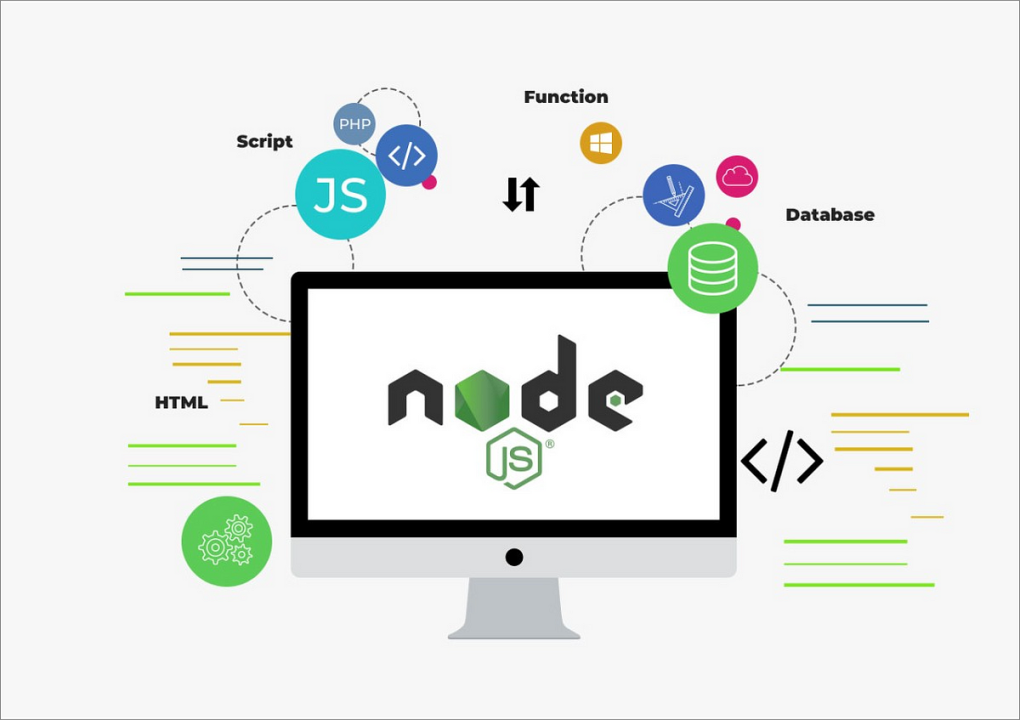Pulse of Information
Your source for the latest insights and updates.
Node.js: Where JavaScript Runs Wild
Discover how Node.js unleashes the full power of JavaScript and transforms the way you build web applications. Dive in now!
Understanding Node.js: The Power of JavaScript on the Server-Side
Node.js is revolutionizing the way developers build server-side applications by enabling them to use JavaScript beyond the browser. Traditionally, JavaScript was confined to client-side execution, but with Node.js, developers can use it to create scalable and high-performance server-side solutions. This shift allows for a more unified codebase across both client and server, simplifying the development process. As a result, many organizations are transitioning to Node.js for its non-blocking I/O and event-driven architecture, which significantly enhances application performance, especially for real-time data processing and concurrent requests.
One of the key features of Node.js is its asynchronous and event-driven nature, which allows applications to handle multiple operations simultaneously. This is particularly beneficial for modern web applications that demand high responsiveness and efficiency. By leveraging the V8 JavaScript engine, Node.js compiles JavaScript to native machine code, providing remarkable speed and performance. Furthermore, the vast ecosystem of npm (Node Package Manager) offers an extensive range of libraries and tools that streamline development, making it easier for developers to implement complex features without the need to build everything from scratch.

Top 10 Node.js Frameworks to Supercharge Your Development
Node.js has revolutionized web development by providing a powerful platform for building scalable and high-performance applications. With its asynchronous event-driven architecture, developers can leverage various frameworks to streamline their coding process. In this article, we'll explore the Top 10 Node.js Frameworks that can significantly supercharge your development experience. Each of these frameworks offers unique features, making them suitable for different project requirements.
- Express.js: A minimal and flexible Node.js web application framework that provides a robust set of features to develop web and mobile applications.
- Koa.js: Created by the same team behind Express, Koa aims to be a smaller, more expressive, and more robust foundation for web applications.
- NestJS: A progressive Node.js framework that uses TypeScript, making it a great choice for building scalable and testable applications.
- Hapi.js: Known for its powerful Plugin system, Hapi is a rich framework for building applications and services.
- Sails.js: Designed for building practical, production-ready apps, Sails follows the MVC pattern and offers a robust set of features.
- Meteor.js: A full-stack platform that enables rapid development of real-time web and mobile applications.
- Total.js: A modular Node.js framework that provides everything necessary to build highly scalable applications.
- LoopBack: A highly extensible framework for building APIs and connecting to back-end data sources.
- Fastify: A fast and low-overhead framework for web applications, particularly focused on performance.
- Socket.io: While more of a library than a framework, it enables real-time, bidirectional communication between client and server.
How to Get Started with Node.js: A Step-by-Step Guide
Getting started with Node.js can seem daunting at first, but by following a few simple steps, you can set yourself up for success. First, you'll want to install Node.js on your machine. Visit the official Node.js website, download the latest version suitable for your operating system, and follow the installation instructions. After installation, verify it's successful by opening your terminal or command prompt and typing node -v, which should display your installed version. This ensures that Node.js is ready for your development.
Once Node.js is installed, the next step is creating your first application. Start by creating a new directory for your project and navigating into it using your terminal. Then, initialize your project with npm init and follow the prompts to create a package.json file. After that, create a new JavaScript file, for example, app.js. Open this file in your favorite text editor and start coding! A simple Node.js server can be created with the following code:
const http = require('http');
const hostname = '127.0.0.1';
const port = 3000;
const server = http.createServer((req, res) => {
res.statusCode = 200;
res.setHeader('Content-Type', 'text/plain');
res.end('Hello World\n');
});
server.listen(port, hostname, () => {
console.log(`Server running at http://${hostname}:${port}/`);
});Save the file and run your server with node app.js. Open your browser and go to http://127.0.0.1:3000 to see your Node.js application in action!